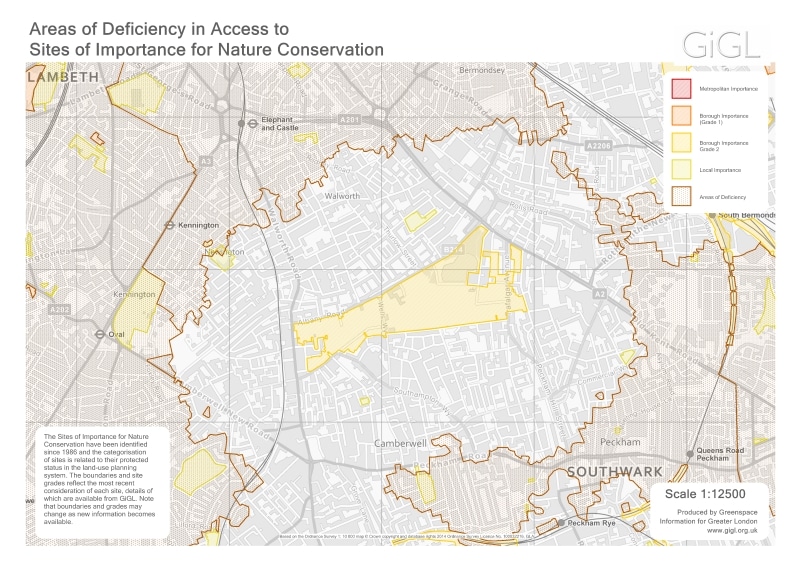Many parts of London are blessed with fine green spaces, which support a wealth of wildlife. However, this is by no means the case across the whole of the capital. A systematic method has been developed of identifying those parts of London where people do not enjoy good access to green spaces with significant wildlife value. These areas are called areas of deficiency (AoD) in access to nature.
GiGL are responsible for updating and maintaining information regarding AoD in access to nature, alongside management of Sites of Importance for Nature Conservation (SINC) data.

Example of Areas of Deficiency around a SINC
A Knowles Knows GiGLer article provides more information about the AoD definition and process, whilst the history of the dataset is explained here.
Methodology
Prior to 2007 AoD was calculated by desk-top and field surveys. Due to resource changes and technological advances, the method of modelling AoD has been automated, in collaboration with the GLA and representatives of the London Boroughs Biodiversity Forum. The process has been further refined and updated in 2021, and more information about this can be found in the GiGLer newsletter.
There are a number of default criteria used in defining the SINCs that alleviate AoD. These can be found in the following document: G020SINCAoD.
SINCs are designated by local planning authorities in London. Every time SINCs are reviewed, any changes should be notified to GiGL. This includes letting us know when any changes affect the alleviation of AoD.
NB Areas of Deficiency in Access to Public Open Space are a separate designation.
